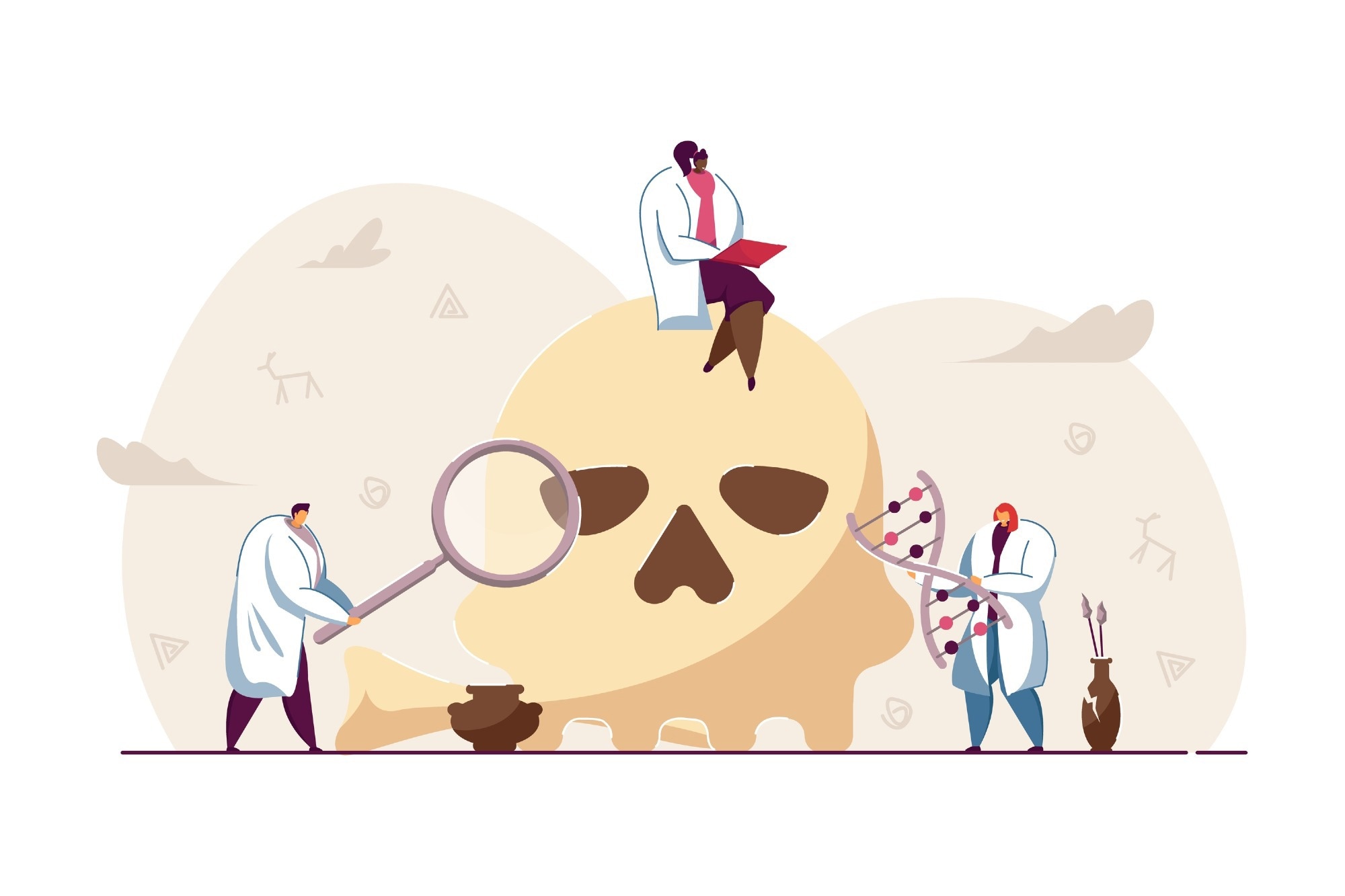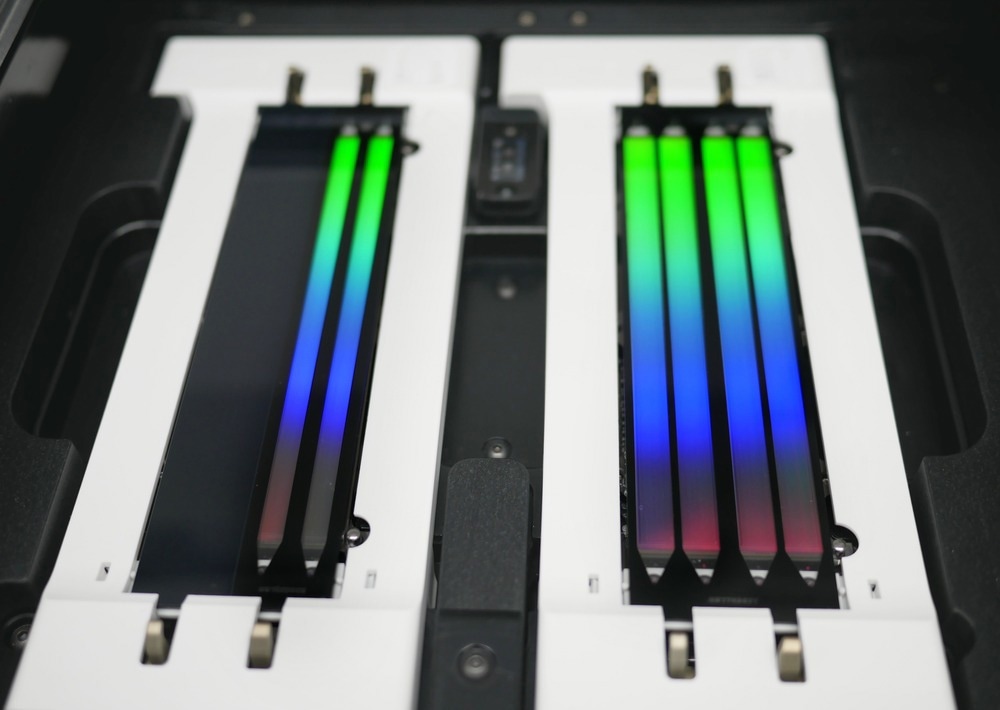Explore the advanced techniques used to retrieve ancient DNA from fossilized samples in this article.

Image Credit: BRO.vector/Shutterstock.com
Ancient DNA research was initially conducted in 1984 with the emergence of the molecular investigation of an ancient DNA team, comprising a group of researchers that isolated and sequenced a short DNA fragment from the dried muscle of a museum specimen from an extinct species. Research into ancient DNA is a revolutionary approach that furthers our understanding of concepts associated with evolution, migration patterns, and the spread of infectious diseases.1
The Importance of Ancient DNA Retrieval
Ancient DNA retrieval can be used as an innovative strategy that provides solutions for a range of puzzles related to the origin of humanity, as well as information about migration patterns and the spread of infectious diseases.1
Following the initial ancient DNA study, another significant stepping stone included groundbreaking ancient DNA research that occurred the year after, consisting of a recovery of a 3.4 kilobases long DNA fragment from a dried tissue of an Egyptian mummy, which was 2,430 years old.1
Ancient DNA samples carry significant damage and contaminated DNA, which can make isolating and cloning specific DNA sequences a challenge. However, with the advancement of molecular biology techniques, such as polymerase chain reaction (PCR), ancient DNA investigations have progressed further.1
PCR has allowed researchers to produce infinitely large numbers of copies from a few or even a single original DNA, enabling several copies of the same DNA sequence from the same specimen to be amplified for the continuous study of ancient DNA.1
Innovations in Sample Collection and DNA Extraction
With DNA studies of endangered or extinct species depending on ancient or degraded remains, most ancient DNA extraction protocols utilize bone and teeth, which are more likely to be preserved than soft tissues.2
Innovations in ancient DNA extraction strategies led to the optimization of experimental and computational steps that aim to increase the sensitivity and reduce the sample size needed for successful analyses. This is significant as the reduced sample size of DNA molecules can usually make it challenging for researchers to isolate the endogenous DNA of interest from the contaminating DNA as well as co-extracted molecules that may inhibit downstream enzymatic reactions.3
Most optimized protocols call for samples to be mechanically decreased into a powder form, with the DNA being released through a series of reactions. Additionally, loosely bound contaminant molecules can be removed through pre-digestion cleaning steps.3
Damage-induced sequence errors due to misincorporations can also be removed from samples with ancient DNA extracts being treated before library construction using a commercialized enzymatic mix, which aims to cut out damage but shortens DNA length in the process.3
Enhancing DNA Preservation and Minimizing Contamination
To reduce further contamination and enhance ancient DNA preservation, the extraction and manipulation of samples must be carried out in clean ancient DNA laboratories. These laboratories are usually access-regulated and located in a separate building from post-amplification DNA samples undergoing manipulation.3
Additionally, the sterile environment is maintained through HEPA-filtered positive air pressure systems, UV exposure, and daily decontamination of bench surfaces with bleach. Researchers are also required to wear suitable personal protective equipment such as disposable full-body suits, gloves, sleeves, face masks and overshoes.3
Cross-contamination is also a factor that is taken into account, along with regular decontamination of laboratory equipment and laminar flow hoods that are fitted with monitored air extraction and filtering systems to prevent pollen, powder, and aerosol contamination. These decontamination protocols aid in reducing modern DNA from entering the laboratory and potentially affecting ancient DNA samples.3
As a result of the rate of ancient DNA preservation differing at a microscopic scale, the use of repeated multiple analyses using small sample amounts can lead to a higher chance of success rather than performing a single analysis using a large sample. This is due to single analyses in a larger sample averaging out preservation rates as well as causing a higher amount of destruction within the ancient DNA.3
Another preservation-enhancing strategy used by researchers includes ensuring that DNA analyses on rare and precious ancient DNA samples are not carried out without preliminary analyses to ensure success.3

Image Credit: Elpisterra/Shutterstock.com
Next-Generation Sequencing in Ancient DNA Analysis
The use of PCRs enabled ancient DNA retrieval researchers to target and replicate specific DNA sequences, and before 2010, this method and Sanger sequencing were the predominant approaches used to retrieve ancient genomic sequences.1
However, the emergence of next-generation sequencing (NGS) pushed past the limitations of PCR for ancient DNA retrieval, with NGS making it possible to analyze evolutionary changes in many species through time and sequence entire mitochondrial genomes as well as reconstruct nuclear genomic regions.1
Additionally, NGS enabled further redefining of ancient DNA research due to its technical applications, including DNA hybridization capture, which has proven useful in providing fresh research on ancient pathogen DNA, rejuvenating this as an active study area.1
Interestingly, DNA hybridization has even led to the recovery of the earliest ancient DNA for non-permafrost samples from an approximately 400,000-year-old archaic hominin; ancient DNA retrieval from these samples was a challenge, with even shotgun sequencing failing to succeed.1
Challenges and Ethical Considerations in Ancient DNA Research
There are many challenges associated with ancient DNA research, including the analysis of bleach-treated samples. Chemical treatment of bone powder, such as bleach, can decrease the exogenous DNA fraction and may be used when researchers experience repeated failure due to contamination of ancient DNA. However, this treatment can also lead to artificially aging modern contaminant DNA and may be misconstrued when authenticating the ancient DNA; due to this, authentication of bleach-treated samples should be performed vigilantly.3
Additionally, there are also ethical considerations that researchers must evaluate before attempting to analyze ancient DNA, with the sampling and destruction of human remains for this type of research requiring consideration of cultural, historical, and political implications. Ancient DNA research should be carried out mindful of these factors with the involvement and approval of local stakeholders, including curators, local communities, and religious institutions. The use of minimally destructive analytical techniques should also be ensured, with the remaining sample materials being returned to the museum or appropriate group, including restoration of the parts that were destroyed.3
Conclusion
Ancient DNA research is a revolutionary approach that aims to understand the past and involves complex techniques that utilize small, damaged artifacts to embark on a historical journey. With innovative technologies, such as NGS, advancing scientific capacities, everything that has been discovered thus far may only be a glimpse into the potential future of ancient DNA.1,3
Sources:
- Dalal, V., et al. (2023) Advancements and challenges in ancient DNA research: Bridging the Global North–South Divide. Genes, 14(2), p. 479. doi.org/10.3390/genes14020479
- Zhang, M., et al. (2021) Comparative analysis of DNA extraction protocols for ancient soft tissue museum samples. Zoological Research, 42(3), pp. 280-286. doi.org/10.24272/j.issn.2095-8137.2020.377.
- Orlando, L., et al. (2021) Ancient DNA analysis. Nature Reviews Methods Primers, 14(1). doi.org/10.1038/s43586-020-00011-0
Further Reading
Last Updated: Mar 12, 2024